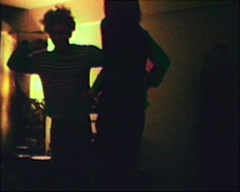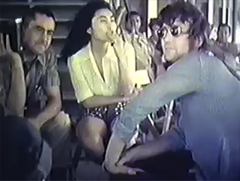Larry Lessig writes in Free Culture:
Why is it that the part of our culture that is recorded in newspapers remains perpetually accessible, while the part that is recorded on videotape is not? How is it that we’ve created a world where researchers trying to understand the effect of media on nineteenth-century America will have an easier time than researchers trying to understand the effect of media on twentieth-century America?
Twentieth century Holland, it turns out, will be easier to decipher:
The Netherlands Government announced in its annual budget proposal the support for the project “Images for the Future” (in Dutch). Images for the Future is a large-scale conservation and digitalisation operation comprising 285,000 hours of film, television and radio recordings, and 2.9 million photos. The investment of 173 million euro, is spread over a period of seven years.
…It is unprecedented in its scale and ambition. All these films, programmes and photos will be made available for educational and creative purposes. An infrastructure for digital distribution will also be developed. A basic collection will be made available without copyright or under a Creative Commons licence. Making this heritage digitally available will lead to innovative applications in the area of new media and the development of valuable services for the public. The income/expense analysis included in the project plan shows that on balance the project will produce a positive social effect in the Dutch economy to the value of 20 to 60 million euros.
— from Association of Moving Image Archivists list-server
Pretty inspiring stuff.
Eddie Izzard once described the Netherlandish brand of enlightenment in a nutshell: “The Dutch speak four languages and smoke marijuana!” We now see that they also deem it wise policy to support a comprehensive cultural infrastructure for the 21st century, enabling their citizens to read, quote and reuse the media that shapes their world (while they whiz around on bicycles over tidy networks of canals). Not so here in the States where the government works for the monopolies, keeping big media on the dole through Sonny Bono-style protectionism. We should pass our benighted politicos a little of what the Dutch are smoking.



